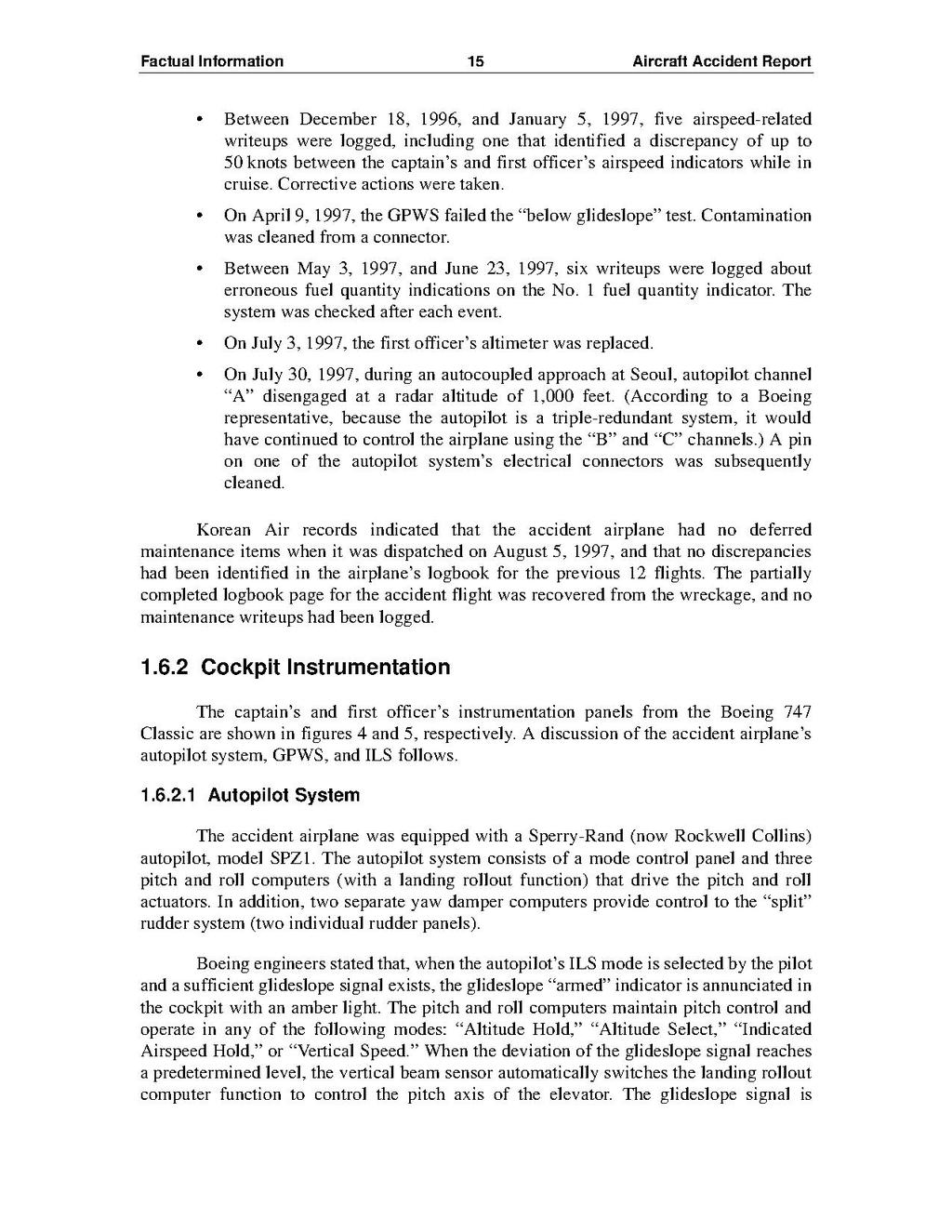- Between December 18, 1996, and January 5, 1997, five airspeed-related writeups were logged, including one that identified a discrepancy of up to 50 knots between the captain's and first officer's airspeed indicators while in cruise. Corrective actions were taken.
- On April 9, 1997, the GPWS failed the "below glideslope" test. Contamination was cleaned from a connector.
- Between May 3, 1997, and June 23, 1997, six writeups were logged about erroneous fuel quantity indications on the No. 1 fuel quantity indicator. The system was checked after each event.
- On July 3, 1997, the first officer's altimeter was replaced.
- On July 30, 1997, during an autocoupled approach at Seoul, autopilot channel "A" disengaged at a radar altitude of 1,000 feet. (According to a Boeing representative, because the autopilot is a triple-redundant system, it would have continued to control the airplane using the "B" and "C" channels.) A pin on one of the autopilot system's electrical connectors was subsequently cleaned.
Korean Air records indicated that the accident airplane had no deferred maintenance items when it was dispatched on August 5, 1997, and that no discrepancies had been identified in the airplane's logbook for the previous 12 flights. The partially completed logbook page for the accident flight was recovered from the wreckage, and no maintenance writeups had been logged.
1.6.2 Cockpit Instrumentation
The captain's and first officer's instrumentation panels from the Boeing 747 Classic are shown in figures 4 and 5, respectively. A discussion of the accident airplane's autopilot system, GPWS, and ILS follows.
1.6.2.1 Autopilot System
The accident airplane was equipped with a Sperry-Rand (now Rockwell Collins) autopilot, model SPZ1. The autopilot system consists of a mode control panel and three pitch and roll computers (with a landing rollout function) that drive the pitch and roll actuators. In addition, two separate yaw damper computers provide control to the "split" rudder system (two individual rudder panels).
Boeing engineers stated that, when the autopilot's ILS mode is selected by the pilot and a sufficient glideslope signal exists, the glideslope "armed" indicator is annunciated in the cockpit with an amber light. The pitch and roll computers maintain pitch control and operate in any of the following modes: "Altitude Hold," "Altitude Select," "Indicated Airspeed Hold," or "Vertical Speed." When the deviation of the glideslope signal reaches a predetermined level, the vertical beam sensor automatically switches the landing rollout computer function to control the pitch axis of the elevator. The glideslope signal is
